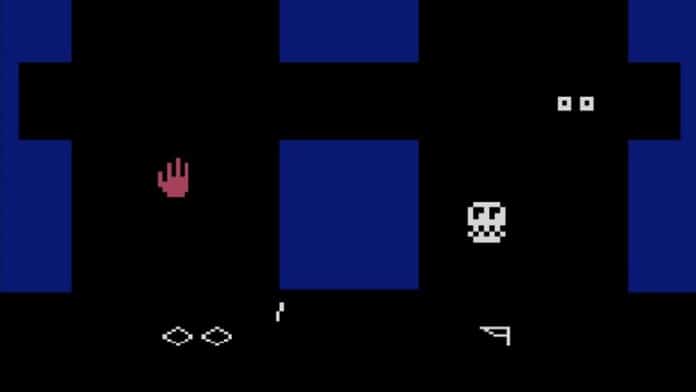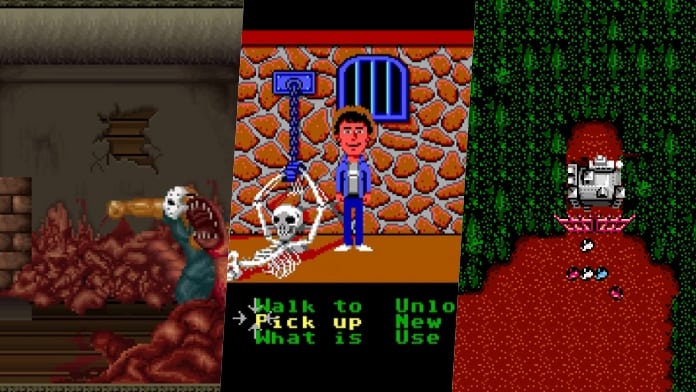It is somewhat of a mystery why people like to be scared. It’s a strange phenomenon, the idea of people enjoying and reveling in the fearful side of humanity. The mere thought of horror being a tool of excitement rather than a concept that would bring unease. Then again, it’s nothing new. In fact, it’s quite popular in modern times. Getting your heart up and pumping, and fueling adrenaline is like a good rush of ecstasy. Bearing in mind, of course, that all you see isn’t real, or is it?
Movies best embody this aspect. The disturbing side of the silver screen gave us some memorable scares and cult icons that became more popular than some action heroes. There is nothing better than a horror film, but with the rise of technology, a new form of fear is born. Much like movies, video games come in different shapes and sizes. Genres in games differ from fantasy to that of pure action, and horror somewhere in between. It’s even safe to say that these types of games emerged with the rise of the industry, and one of the first genres adapted into an interactive format. Oozing slowly into the media, and gradually developing shape over time.
The thrill of fear was even more present in the gaming industry than in movies. From books to real-life stories and creepypastas, creators had a vast catalog of places to inspire their monstrosities. Even in smaller kid-friendly games, fear makes its presence felt, though in a much more toned-down fashion. It’s rich in history, much like its silver screen counterpart. And much like its movie counterpart, produced a legacy of iconic titles, ones that even transcended the gaming format.
The Seeds of a Genre
It’s hard to pinpoint precisely where and when horror actually started to make its mark in the entertainment department. While movies can trace its roots way back to the last century, gaming only made its debut during the Cold War. Films like 1922’s ‘Nosferatu‘ started the so-called horror genre, which would reach its peak during the 50’s and 60’s. William Castle, Alfred Hitchcock, and Terence Fisher, all big icons that would fully launch the genre. Games, on the other hand, got a different treatment.
Its earliest roots go way back to 1972, with an adventure game titled Hunt the Wumpus. The premise is quite simple. Navigating through a maze-like environment, you hunt for the Wumpus. Dodging traps and pits to sense the creature, only to fire an arrow blindly in hopes of killing it. If you successfully pinpointed its lair, you win. If not, the Wumpus moves. Still considered to this day to be an early survival horror title, even by its simplistic design, it would slowly start the process of ushering in a new theme in games.
However, on the big screen, things were slowly starting to shake up. The Texas Chainsaw Massacre and Halloween introduced the world to the slasher film. Blood and gore were all the fuss, and everybody saw the success it capitalized. By this point, the Atari Home Console was pushed out into the general public. So the need to push out licensed properties to ensure the growth of the console soon took place. Both slasher titles were adapted not long after the cinema releases, and due to the Atari’s capability of the time, failed miserably. Genuine horror-themed titles wouldn’t make a significant impact until later on. Instead, something far more ominous lurked beneath.
The Horrors of the Cold War
As computers saw usage during the Cold War, many of its games were simplistic in their design. The conflict between the US and USSR sparked more fear than a mere film. All-out nuclear war was a much more realistic menace and genuine horror was present during the time. A thermonuclear bomb wreaked devastation on so many levels, the death of millions as seen during the second World War. This conflict would steadily but significantly make its way to entertainment media.
While not labeled as an all-out horror game, the minor concept of an extreme death toll was in and of itself a horrific idea. This was not a serial killer bent on a rampage, but the true dark nature of warfare. Games such as Missile Command and Raid over Moscow featured such a setting. Where the threat of nuclear annihilation wasn’t a question, but when will it inevitably happen. They made their way into popular culture as a depiction of what awaits humanity if total destruction occurs. A harmless arcade game, but with an actually relatable and terrifying message.
The 80’s Craze
Both forms of entertainment had a slow and rough beginning, but the movie industry would fair better between the two. Games enjoyed relative success with arcade titles and small console releases. However, while it didn’t succeed in the horror department, it still managed to try and innovate. Text-based adventures like the 1981 ‘Asylum‘ and ‘Mystery House‘ introduced a theme that would be present in future releases. While Survival Horror was introduced by these two titles, it would be explored in more depth in 1982’s ‘Haunted House‘ and ‘Night Stalker.’
Haunted House was mainly used as an archetype, and referred to as the first-ever survival horror. The game consists of only three floors and a basement. Your character can pick up only one of three items. The key allows the player to progress through different rooms, while the urn is needed to exit the house. However, menacing apparitions tend to attack, so the player can use a staff to repel against the spirits. It has only nine levels, and with each level, difficulty increases. Not a complex idea, but its unique inventory management is something that would become a trend in modern games.
For every exciting new addition, there was always one skeleton in the wardrobe. Licensed release of Friday the 13th went down in infamy as one of the worst movie tie-in games ever made. Titles like The Evil Dead and Alien on the Commodore 64 weren’t helping out either. Perhaps it was about time to hang the coat and submit defeat. The industry tried and failed at producing a good quality horror experience. Just in the nick of time, a defining feature would ensure the survival of the genre within gaming. And it was all thanks to one man outside of the gaming industry.
Flesh Eaters
George A. Romero was a key icon in the film world. In 1962, the father of zombie films introduced us to the undead menace with ‘Night of the Living Dead.’ The zombie was a disposable enemy that could range in larger quantities. A perfect creature for a protagonist to overcome, and one that provided the necessary spook, enough to be considered a horror game. Even to this day, zombies overrun the video game market, but back in the day, it was an innovative and smart step that ensured the stability of the genre.
Platform action games were the first ones to integrate the flesh-eaters successfully. Ghosts and Goblins pitted the knight Arthur against hordes of zombies and ghouls in a cartoony platformer. However, there is one franchise that would ultimately embrace the walking dead, along with other monstrosities from fiction. Dracula, Frankenstein, The Mummy, The Werewolf, The Minotaur. All were placed as enemies for the infamous Belmont Clan, and its first and most adored hunter, Simon Belmont.
Castlevania gave us exactly what we wanted. A lone hunter on a quest to rid the world from the cinema’s biggest icons. The main baddy was Dracula, but the lineup of other foes grew with each new release. A likable protagonist, an iconic antagonist, and finally a recipe that delivered results. The game soon grew into a franchise, followed by Castlevania II: Simon’s Quest, Castlevania III: Dracula’s Curse, and The Adventure. In all titles, the players take on the role of a Belmont. Armed with a whip and some trinkets, you set out to face the big bads and bring peace to the land. Though complex due to their platforming, the games were an instant hit and asured everyone that more was to come in the future.
A Steady Transition Into A New Decade
The last years of the ’80 saw even more significant growth in gaming. Splatterhouse would push out the slasher genre throughout the arcade machines. Inspired by licensed big time cinema names, it, in the end, went for its own unique story. This was also the first game that would slowly take influences from literature, most notable H.P.Lovecraft. The abnormalities take a more macabre look instead of the classic monsters. However, the protagonist of the game clearly takes inspiration from Evil Dead and Friday the 13th. It was fun for a while and a great way to spend coins in the arcade, but two other games would wrap up the decade.
As the text-based adventures evolved, the themes they were covering also changed. Maniac Mansion, created by Rob Gilbert, was critically praised after its release. While it was a comedic adventure that made fun of slasher film cliches, it was still considered a horror-themed game. Six individuals are tasked with escaping the titular mansion, inhabited by multiple hostiles. Dr. Fred, a mad scientist, and resident of the estate attempts to pick-off each character one by one. Thanks to the then SCUMM engine, the player is given an extensive list of commands to ensure the six characters leave in one piece.
Multiple endings and paths are available for the player, with unique abilities for each individual. A full package, but there was one more like it. Sweet Home, by Capcom, was the Japanese answer to Gilbert’s adventure title. The same premise and similar gameplay didn’t give the game much recognition in the US, but it did manage to garner its own cult following. Told with a more cinematic approach, it would blend elements from all of the previous attempts at horror and do it right. Serving as a benchmark for future games, it would shake up the industry like never before and completely cement the theme on the small screen. A more sinister, darker, and corporate fear emerged.
To be continued in Part 2.
- The Importance of Clara Zetkin for International Women’s Day - March 8, 2020
- Tatsuro Yamashita aka The King of City Pop - March 1, 2020
- Samurai Jack: Battle Through Time Announced for 2020 - February 25, 2020






